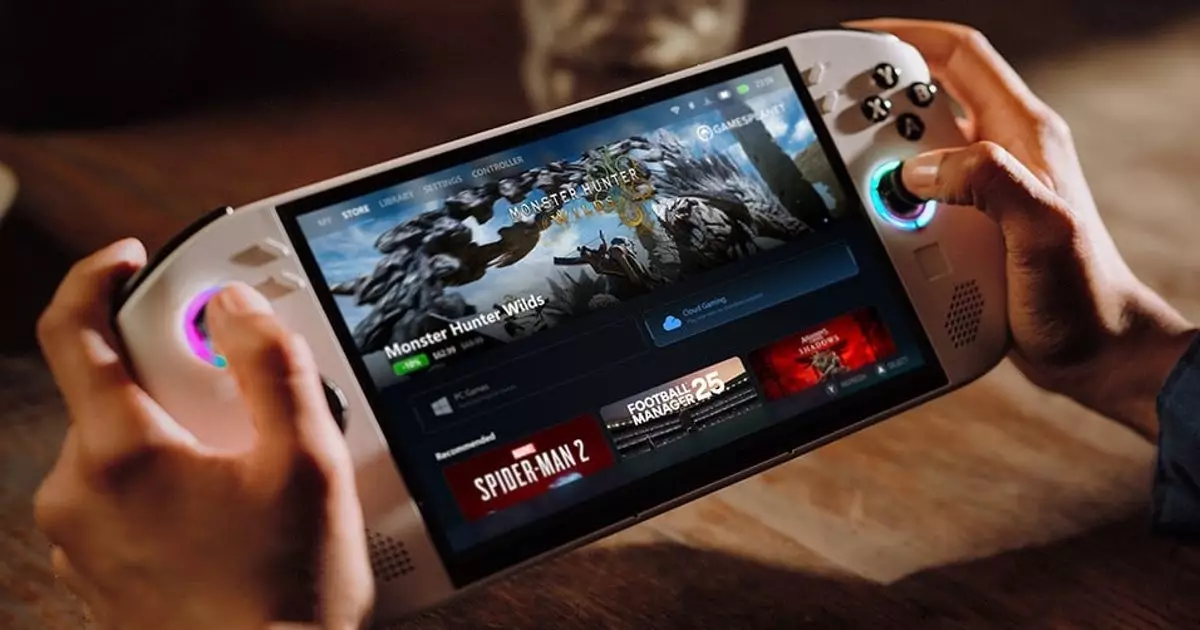For Steam Deck enthusiasts, each day often begins with a ritualistic check of the latest game releases and their compatibility status. The little green tick mark on the Steam store page symbolizes hope—a promise that the game will not only launch but provide an enjoyable experience on the Steam Deck. This concept is encapsulated by the Steam Deck Verified program, which serves as a guideline for gamers navigating the labyrinth of software compatibility on handheld devices. Recently, Valve announced an exciting expansion of this program aimed at not just the Steam Deck, but the entire realm of devices running on SteamOS. This is a noteworthy step that offers both potential and optimism for the future of handheld gaming.
The Arrival of New Hardware
The announcement comes at a pivotal time, as the gaming world prepares for the upcoming release of new handheld devices, including the Lenovo Legion Go S, which is set to run on SteamOS. The implication here is monumental: there is a growing recognition that there is more to handheld gaming than simply the Steam Deck. As these new devices enter the market, Valve is willing to adapt its compatibility testing protocols. They may not have the bandwidth to test every game on every SteamOS device, but they plan to leverage existing data from the Steam Deck Verified tests to determine a game’s operability with SteamOS as a whole. This data-driven approach is smart—especially in a landscape defined by rapid technological advancements and ever-evolving consumer demands.
Introducing Key Compatibility Categories
The revised compatibility system will categorize games under two new labels: “SteamOS Compatible” and “SteamOS Unsupported.” These categories will replace the more limited Verified/Playable/Unsupported ratings we’ve grown accustomed to, allowing gamers to make quicker, informed decisions when considering a new title. While these permissions do not examine nuanced aspects like frame rate optimization or input methodologies, they serve a crucial role by clearly indicating whether a game is playable on SteamOS devices.
For instance, a notable title like Apex Legends is likely to see the “SteamOS Unsupported” status following its removal of Linux support last year. Such clarity will prevent players from investing time into games that simply won’t function, reducing frustration and increasing overall satisfaction with the Steam store experience.
The Current State of OS Preferences
Interestingly, as of now, SteamOS appears to overshadow Windows 11 in terms of usability within the portable PC gaming market. The lightweight and stable nature of SteamOS stands in stark contrast to the cumbersome experience many users have reported with Windows. This marks a significant turning point in the gaming landscape, providing an urgent call to action for companies designating their handhelds for more streamlined and user-friendly experiences. With SteamOS proving capable not just for Steam titles but for non-Steam games as well, it might be time for more developers to consider this platform seriously.
A Look to the Horizon
Furthermore, Valve envisions a future where their compatibility system is crucial for encouraging a broader selection of manufacturers to adopt SteamOS in their handheld offerings. While the Lenovo Legion Go S is currently the sole device boasting this support, the company recognizes that this is merely the beginning. The potential for greater diversity in handheld options could create an arms race among manufacturers to harness Valve’s innovative platform—an exciting prospect for consumers eager to explore various gaming hardware options.
However, we can’t ignore the cautionary tales that accompany this evolution. Leaks concerning devices like the Asus ROG Ally 2 show a lingering commitment to Microsoft’s ecosystem, indicating that not all manufacturers are ready to abandon the status quo. In fact, it seems likely that they would choose partnership paths that align with the well-trodden Windows branding. The reality is that while SteamOS shines brightly amid an unclear future, the transition to compatibility is not without its hurdles.
The Final Word
As we stand at the forefront of a new era for handheld gaming, the expansion of Valve’s compatibility ratings for SteamOS signifies a commitment to improving the gaming ecosystem for everyone, from developers to players. The promise of a brighter future, driven by innovation and user experience, beckons in the form of new devices, better compatibility systems, and a community that thrives on collaboration and exploration. This is an exhilarating time to be a gamer, and it’ll be interesting to see how things unfold in the coming months and years.


Leave a Reply